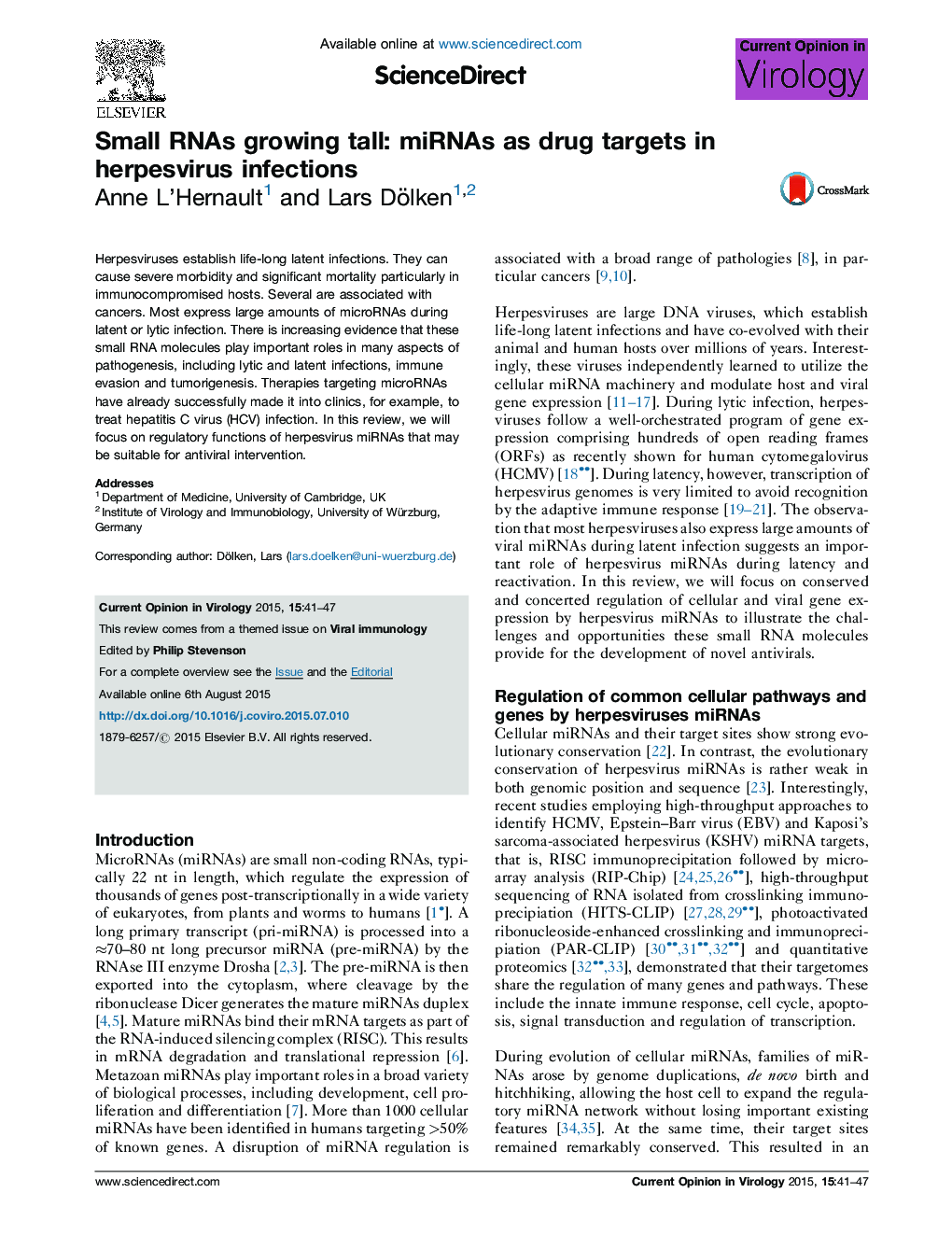| کد مقاله | کد نشریه | سال انتشار | مقاله انگلیسی | نسخه تمام متن |
|---|---|---|---|---|
| 2473209 | 1555911 | 2015 | 7 صفحه PDF | دانلود رایگان |

• Herpesvirus miRNAs are key regulators of productive and latent infection.
• KSHV and EBV miRNAs contribute to tumorigenesis.
• HCMV miRNAs are required for productive infection.
• Recent studies revealed sets of viral miRNAs suitable for antiviral intervention.
• Advances in anti-miR delivery now allow efficient targeting of miRNAs in vivo.
Herpesviruses establish life-long latent infections. They can cause severe morbidity and significant mortality particularly in immunocompromised hosts. Several are associated with cancers. Most express large amounts of microRNAs during latent or lytic infection. There is increasing evidence that these small RNA molecules play important roles in many aspects of pathogenesis, including lytic and latent infections, immune evasion and tumorigenesis. Therapies targeting microRNAs have already successfully made it into clinics, for example, to treat hepatitis C virus (HCV) infection. In this review, we will focus on regulatory functions of herpesvirus miRNAs that may be suitable for antiviral intervention.
Journal: Current Opinion in Virology - Volume 15, December 2015, Pages 41–47